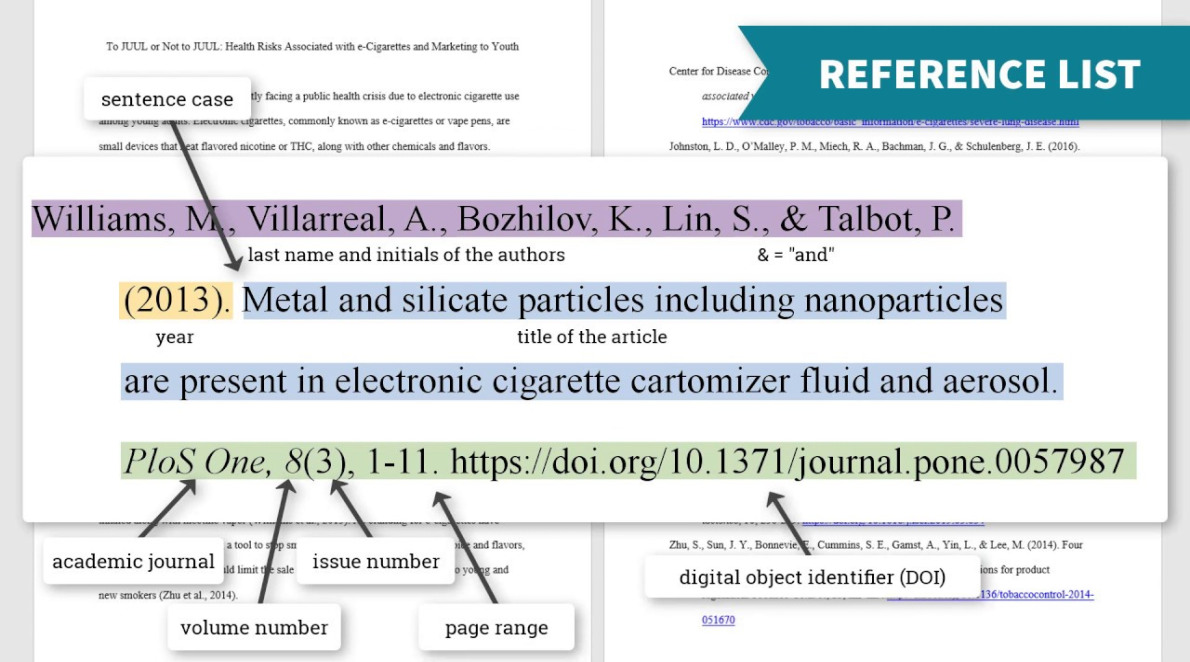Example of APA 7 Citation
When it comes to academic writing, citing sources is a crucial aspect that cannot be overlooked. Proper citation not only gives credit to the original authors but also helps readers trace the sources for further information. The American Psychological Association (APA) has developed a set of guidelines called APA Style to ensure consistency and accuracy in citations. The most recent version, APA 7, provides specific rules for citing various types of sources. In this article, we will explore an example of APA 7 citation and understand how to create citations in this format.
What do you mean by APA 7 citation?
APA 7 citation refers to the method of acknowledging and documenting sources used in academic writing using the guidelines set by the American Psychological Association. These guidelines are designed to provide a standard format for citations, making it easier for researchers and readers to locate the original sources referred to in the text. APA 7 citation style includes specific rules for citing books, journal articles, websites, and other types of sources.
How to create an APA 7 citation?

Creating an APA 7 citation involves following a specific format depending on the type of source being cited. Let’s take the example of a book to understand how to create an APA 7 citation:
Author(s): Start by listing the last name and initials of the author(s) of the book. If there are multiple authors, separate their names with commas and use an ampersand before the last author’s name.

Publication Year: Include the year of publication in parentheses after the authors’ names. Place a period outside the closing parentheses.
Title of Book: Capitalize the first letter of the first word in the title and subtitle (if any), as well as any proper nouns. Italicize the title and subtitle, and end with a period.
Publisher: Provide the name of the publisher, followed by a period.
DOI or URL: If the book has a DOI (Digital Object Identifier) or a stable URL, include it at the end of the citation. Precede the DOI with https://doi.org/ or the URL with Retrieved from. End with a period.
Page Numbers (Optional): If you are directly quoting or referring to a specific page or range of pages, include the page numbers after the title and before the publisher.
Here is an example of an APA 7 citation for a book:
Smith, J. D., & Johnson, A. B. (2022). The Art of Writing: A Guide to Academic Success. Random House.
What is known about APA 7 citation?
APA 7 citation style is widely used in the social and behavioral sciences as well as other academic disciplines. It provides a clear and consistent format for citing sources, allowing researchers to communicate their ideas effectively and demonstrate the credibility of their work. By following the guidelines of APA 7, writers can avoid plagiarism and present their research in a professional manner.
Solution for creating APA 7 citations
Creating APA 7 citations manually can be time-consuming and prone to errors. Thankfully, there are several online citation generators available that can automate the process and ensure accurate citations. These generators prompt users to input the necessary information and generate citations in APA 7 format instantly. Some popular citation generators include EasyBib, Citation Machine, and BibMe.
Additional Information about APA 7 citation
In addition to books, APA 7 guidelines provide specific rules for citing various other sources such as journal articles, websites, newspapers, and even social media posts. It is important to consult the official APA Publication Manual or reputable online resources to ensure accurate citation of different types of sources. Familiarizing oneself with APA 7 guidelines can greatly benefit students, researchers, and writers in their academic and professional endeavors.
Conclusion
APA 7 citation is an essential skill for anyone involved in academic writing. By following the specific format and guidelines set by the American Psychological Association, writers can ensure proper attribution of sources and maintain academic integrity. Whether it is a book, journal article, website, or other sources, understanding how to create APA 7 citations is crucial for accurate and effective academic writing.
FAQs
1. What is the difference between APA 7 and APA 6?
APA 7 introduced several updates and changes compared to APA 6, including revised guidelines for citing online sources, in-text citations, and reference list entries.
2. Can I use APA 7 citation style for non-academic writing?
While APA 7 is primarily designed for academic writing, it can also be used for other forms of writing that require source attribution and consistency in citations.
3. Are there any free tools available for creating APA 7 citations?
Yes, there are several free online citation generators that can help create APA 7 citations, such as EasyBib, Citation Machine, and BibMe.
4. Can I cite a source that is not mentioned in APA 7 guidelines?
If you come across a source that is not covered in the APA 7 guidelines, it is advisable to use a similar format for a related source or consult the official APA website or manual for guidance.
5. Is it necessary to include page numbers in an APA 7 citation for a book?
Page numbers are optional in an APA 7 citation for a book, but if you are directly quoting or referring to a specific page, it is recommended to include the page numbers for accuracy and clarity.